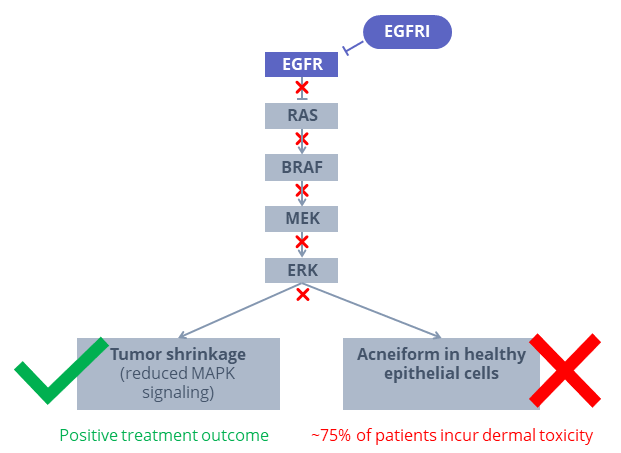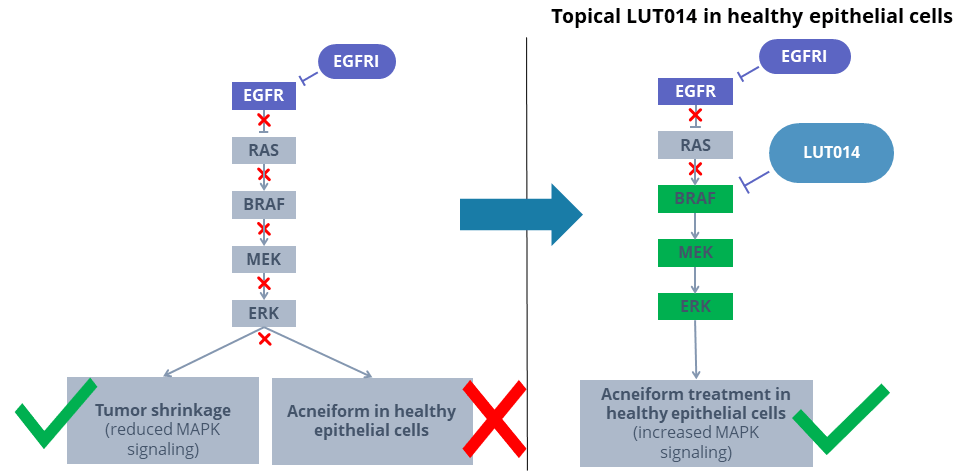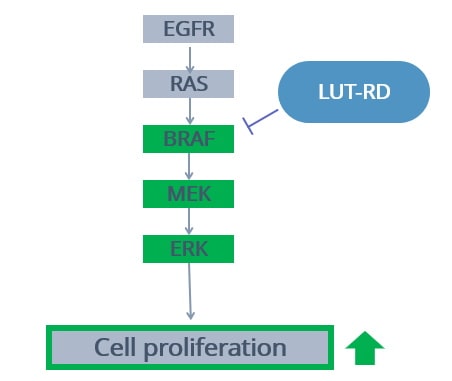EGFRI INDUCED RASH
EGFR (Epidermal Growth Factor Receptor) is a receptor on the surface of cells which is expressed in many normal epithelial tissues, including skin. The EGFR signaling pathway is one of the most important pathways that regulate growth, survival, proliferation, and differentiation of cells. B-Raf is protein encoded by the BRAF gene and is a downstream effector component of EGFR signaling pathway. EGFR is shown to be over-activated in various human cancers, including colorectal, lung, head & neck, urinary bladder, pancreatic and breast, cancers. While over-activated, it elicits downstream phosphorylation and activation of the MAP Kinase pathway and B-Raf protein.
Drugs called EGFR inhibitors can block the EGFR signal responsible for cell growth. Among the various types of pharmacological therapies for cancer, EGFR inhibitors are increasingly being used both as primary therapy as well as in patients who have failed prior chemotherapy. Although effective as anti-cancer therapy leading to tumor shrinkage, EGFR Inhibitors have a number of adverse reactions associated with their use. The majority of patients treated with EGFR Inhibitors will experience dermatological side effects typically manifested as a papulopustular skin rash, also known as acneiform lesions, which can impact quality of life and affect adherence to therapy.



